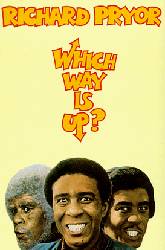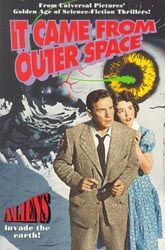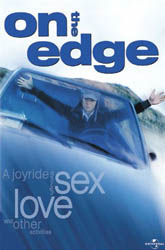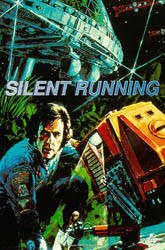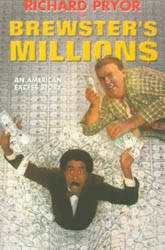 Director: Starring:
Director: Starring:
OTHER REVIEWS: Bowfinger Life The
Nutty Professor II: The Klumps Trippin' |
Brewster's Millions Which Way Is Up? BY: DAVID PERRY "What is most wonderful and most missed about the humor of Richard Pryor is his simultaneous rage and vulnerability -- that sense of being mad as hell yet still yearning for and believing in acceptance and reconciliation, whether he was riffing about black folks, white folks, women, politics, black male macho or drug addiction. For Pryor, humor and talking much shit was a way to reveal not only his, but our collective psyche." In November 1998, Salon.com began a series of biographies for legends called Brilliant Careers. In original intent, it was a way to write loving obituaries for living artists: Phil Spector, Pete Townshend, and Richard Pryor. By the end of its run, in May 2000, Pryor had been joined by the likes of David Letterman, Charles Schultz, Lou Reed, Marcel Marceau, and even David Cronenberg. Why did an enraged comic from Illinois, whose act consisted of every expletive in the book and an indiscreet willingness to question everything America considered right about racial interaction, precede names like those? Jill Nelson wrote in her 24 November 1998 Brilliant Careers column titled "Pryor Knowledge" of the Richard Pryor that, at 58, had been debilitated by Multiple Sclerosis to the point that he could not speak at his own Mark Twain Prize award banquet. Her loving piece on a man whose career served as the racial mirror of Lenny Bruce, brings back all the memories of a young boy in Cambridge, MA, who would spend the night over at the home of a friend whose video collection included the supposedly adulterant comedy shows of Richard Pryor. Living in the lily white neighborhood, this was an introduction into the social interests of a race, of a strata, of a people across the River. We laughed, yes, but we also learned that there were so many problems in the world off of Irving St. By the time I had come to love movies, my interests in Pryor had waned -- I had already found Eddie Murphy Raw and the other comedians who learned the trade from Pryor. The Toy, Superman III, and Brewster's Millions, all of which I saw around 1987, lacked the comic appeal of his stand-up shows, where he had the freedom to play around with expletives, adult subjects, and, more than anything else, social inequalities that would not fit in the PG-rated films Hollywood wanted him to play in. On 21 May, Universal will revisit the career of Richard Pryor with a pair of restored DVDs marking the two major sections in his Hollywood career. 1977's Which Way Is Up? works on similar turf to what made Pryor famous with satires of sex, work, socialism, and religion; 1985's Brewster's Millions, instead, feels like watching a muzzled Pryor trying to play cute in a role tailor-made for someone (anyone) else. 'Tis a pity neither of movie really succeeds. Which Way Is Up? definitely stands as the better of the two, with an easiness that fits the story -- a revamping of Lina Wertmüller's The Seduction of Mimi, dealing with the escalating problems involved in the mobility of a union lackey -- and a collection of Richard Pryor characterizations that do more for the story than anyone else in the movie. Pryor plays three roles, migrant worker Leroy Jones, old curmudgeon Rufus Jones, and sinning reverend Lenox Thomas. This collection of characters play well since Pryor shows an ability to effectively play off of himself without making it seem forced (he's like a precursor to Eddie Murphy's work in Coming to America and The Nutty Professor). However, problems arise mainly because most of the comedy, penned by Cecil Brown and Carl Gottlieb, seems to be pervasive for the sake of being so. Many of the film's most feeble jokes are built around the expletives that Pryor is known to bandy out. It's like hiring George Carlin to play a foul-mouthed protester -- if the audience has been brought in based on his previous work, they've already seen all this stuff done before. This lewdness inherent in Which Way Is Up? has kept it from raising out of the anonymity of many late 1970's neo-comical blaxploitational films. That is not the case with Brewster's Millions, which has continued to play on channels like TBS thanks to a more family-friendly tone. The movie -- the sixth adaptation of George Barr McCutcheon's novel of the same name -- follows a lower class schmuck, Monty Brewster (Pryor), given the chance to make $300 million in inheritance if he can squander $30 million in 30 days without making any money (i.e. no successful stock market deals) or holding any assets (i.e. no material purchases). In other words, Brewster must spend all of his money on wages, rents, and tiny gifts to get rid of this money lest he break the contract and thus give the inheritance over to the corrupt bank. The frenzy Pryor wants to unleash is often visible in his physical reactions, but so much of his comic styling has been muted by the film, to the point he cannot even save himself from the unfunny material written by Herschel Weingrod and Timothy Harris. Even more disappointing is the fact that Brewster's Millions was directed by Walter Hill, who was fresh off of hits like 48 Hrs. and The Warriors. What's most saddening is the fact that both Hill and Pryor have it in them to infuse enough discourse into a smart and witty film to create a terrific work. Unfortunately, their only cooperative was on something with less bite than a Wally Cox commercial. Most of Pryor's best films, as well as his still poignant
comedy specials, have already been brought to the DVD. These Universal releases are short
of a major unveiling of Pryor's achievements to digital entertainment, but at least their
release comes as a reminder of what other magnificent choices are waiting for some kid in
Cambridge to discover.
|
